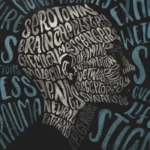One in six adults and 30-40% of primary care patients suffer from unexplained medical symptoms, so your pain is real. Chronic functional syndrome, or psychosocial factors associated with chronic pain. together these are known as Psychophysiologic Disorders
Pain is often misunderstood. This misconception has led to hundreds of millions of chronic pain patients being misdiagnosed and consequently receiving treatments that attempt to treat symptoms while completely ignoring the cause. To address this, you must first understand what pain really is.
Pain Is Your Danger Signal

All pain is real, and all pain is created in the brain. In fact, the brain is responsible for creating every sensation we feel and controls all of our bodily functions through the nervous system. The brain does this by interpreting electrical signals from our body and deciding almost instantly how to respond to them; consciously and unconsciously.
Pain and other uncomfortable sensations are our brain’s way of alerting us when it decides we are threatened. Threats can be real or imagined, physical or psychological. Our sympathetic nervous system primes us to run away or fight when the brain’s danger alert mechanism is activated. When danger signals go away and/or safety signals are perceived, our parasympathetic nervous system is activated to allow us to relax and look at the situation for what it really is.
A Psychophysiologic Disorder is when the danger alarm mechanism is being activated longer than it should or in response to benign stimuli
What are Psychophysiologic Disorders?
Psychophysiologic Disorders (PPD) is the clinical term for mindbody symptoms. PPD are physical conditions and pain symptoms in the body that develop in response to stress, trauma and other psychological factors. These mindbody symptoms can affect almost any structure, organ system or region of the body.
Some physical or medical problems can be strongly influenced by psychological factors such as stress, emotion, or personality. These medical problems are generally called psychosomatic or psychophysiological disorders. It is important to recognize that there is a physiological basis to these disorders and, therefore, problems such as headache or ulcer are not just “all in the patient’s head.” Headaches and ulcers really do hurt. The term psychophysiological means “interaction of psychological and physiological variables.” Consequently, a psychophysiological disorder occurs when psychological and physiological variables interact to produce a pathological state. Common types of psychophysiological disorders are: migraine headache, tension headache, peptic ulcer, irritable bowel syndrome, insomnia, and essential hypertension. These problems share a common etiological theory, which is often called the diathesis-stress model. The term diathesis refers to a constitutional vulnerability toward overactivity in a particular biological system (e.g., cardiovascular or gastrointestinal systems). The diathesis-stress model postulates that stress, worry, anxiety, etc. interact with the vulnerable system to produce a specific psychophysiological syndrome. For example, essential hypertension has been postulated to result from an inherently overactive cardiovascular system such that stress ultimately results in chronically elevated blood pressure. Research evidence supporting the diathesis-stress model is somewhat mixed and is stronger for some psychophysiological disorders than others.
So Your Pain Is real
PPDA Co-Founder Dr. Howard Schubiner created these helpful videos with Dr. Sohrab Gollogly. Understanding PPD is a key step in relieving symptoms – You can watch these videos here

Common Psychophysiologic Disorders
CHRONIC PAIN SYMPTOMS
Fibromyalgia
Tension headaches
Back pain
Neck pain
Whiplash
Knee pain
Patellofemoral syndrome
Temporomandibular joint (TMJ) syndrome
Chronic abdominal and pelvic pain syndromes
Chronic tendonitis (in any joint)
Vulvodynia
Piriformis syndrome
Repetitive strain injury
Foot pain syndromes
Myofascial pain syndrome
Amplified Musculoskeletal Pain Syndrome (AMPS)
OTHER PHYSICAL SYMPTOMS
Migraine attacks
Insomnia
Some patients with Chronic Fatigue Syndrome (CFS), (aka myalgic encephalitis or systemic exertion intolerance disease*)
Paresthesias (numbness, tingling, burning)
Tinnitus (ringing in the ears)
Dizziness
Eczema
Pseudoseizures
Trigeminal Neuralgia
Globus sensation
Burning chest pain (resembles acid reflux)
Difficulty breathing
Chronic cough
Spastic dysphonia
Chronic hives
Hypersensitivity syndromes (to touch, sound, smells, foods, medications)
AUTONOMIC NERVOUS SYSTEM DISORDERS
Irritable bowel syndrome
Interstitial cystitis (Irritable bladder syndrome)
Postural orthostatic tachycardia syndrome (POTS)
Inappropriate sinus tachycardia
Reflex sympathetic dystrophy (Complex regional pain syndrome)
PSYCHOLOGICAL SYMPTOMS
Anxiety
Depression
Obsessive-compulsive disorder
Post-traumatic stress disorder (PTSD)
Eating disorders
Substance use disorders
As always please see links for other blog posts on this website, and if you need to talk about your own personal experiences or would like to arrange to see a counselor in Manchester or Online, then please leave me a message below
And to see even more information on this blog please see the article published by the PPDA which gave me the insp[eration for this blog






